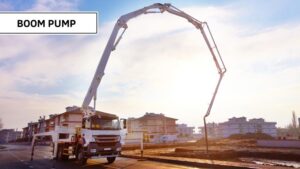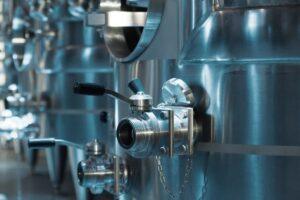
High-rise buildings are marvels of modern architecture and engineering, housing hundreds or even thousands of residents and employees in a single structure.
Ensuring the comfort and safety of these occupants involves sophisticated mechanical systems, particularly for heating, ventilation, and air conditioning (HVAC) and potable water supply.
This blog post explores the intricacies of these critical systems and their importance in high-rise buildings.
HVAC Systems in High-Rise Buildings
HVAC systems are vital for maintaining indoor air quality, temperature, and humidity levels, ensuring a comfortable and healthy living or working environment. High-rise buildings present unique challenges for HVAC design and implementation, requiring robust and efficient systems.
1. Centralized HVAC Systems
Centralized HVAC systems are commonly used in high-rise buildings due to their efficiency in managing large spaces. These systems typically include chillers, boilers, and cooling towers.

Chillers: Chillers remove heat from the building by using a refrigeration cycle. They are essential for cooling large volumes of air and are often located in the basement or on the roof.
Cooling Towers: Cooling towers are used to expel the heat extracted by chillers into the atmosphere. They are generally placed on rooftops to maximize efficiency.
Boilers: Boilers generate heat by burning fuel (natural gas, oil, or electricity) and are used for space heating during the winter and producing hot water. In high-rise buildings, boilers are usually centralized and supply heat through a network of pipes.
2. Distribution Systems
Once the central equipment produces the desired heating or cooling, the conditioned air must be distributed throughout the building. This is achieved using a network of ducts and air handlers.
Ductwork: Ducts transport air to various parts of the building. In high-rises, vertical ducts, known as risers, are crucial for delivering air across multiple floors.
Air Handlers: Air handlers, often located on mechanical floors or rooftops, distribute the conditioned air. They include fans, filters, and heat exchangers to ensure air quality and proper temperature control.
3. Variable Air Volume (VAV) Systems
VAV systems adjust the amount of air delivered to different zones of the building based on demand. This allows for precise temperature control and energy efficiency.
Benefits of VAV Systems:
- Energy Efficiency: By adjusting airflow based on demand, VAV systems reduce energy consumption.
- Comfort: Provides individualized temperature control for different zones, enhancing occupant comfort.
Potable Water Supply Systems in High-Rise Buildings
Providing a reliable and safe potable water supply in high-rise buildings involves complex systems designed to meet stringent health and safety standards.
1. Water Supply Sources
High-rise buildings typically receive water from municipal sources, which is then stored and distributed throughout the building.
Municipal Water Supply: Water is supplied from city water mains, often at a high pressure to ensure it can reach the upper floors.
Water Storage Tanks: These tanks, usually located in the basement or on the rooftop, store water to manage peak demand and provide a reserve in case of supply interruptions.
2. Pressure Management
One of the primary challenges in high-rise buildings is maintaining adequate water pressure, especially for upper floors.

Booster Pumps: Booster pumps are essential for increasing water pressure to ensure it reaches all floors. These pumps are often placed at various levels throughout the building to maintain consistent pressure.
Pressure Reducing Valves (PRVs): To prevent excessive pressure that could damage plumbing fixtures, PRVs are installed to regulate and maintain safe pressure levels within the building.
3. Water Distribution Systems
The distribution of potable water involves a network of pipes and fixtures designed to deliver water to every unit in the building.
Risers: Vertical pipes known as risers carry water from the main supply lines to different floors. They are typically divided into zones to manage pressure and ensure reliability.
Branch Lines: From the risers, smaller branch lines distribute water to individual units and fixtures. These lines are designed to minimize pressure loss and ensure a steady supply.
4. Hot Water Systems
Providing hot water in high-rise buildings requires additional equipment and considerations.
Centralized Hot Water Heaters: Large, centralized water heaters or boilers provide hot water. These systems are more efficient for large buildings compared to individual water heaters in each unit.
Recirculation Systems: To ensure immediate access to hot water and reduce wastage, recirculation systems keep hot water circulating through the pipes, especially in buildings with long plumbing runs.
Challenges of HVAC and Potable Water Supply in High-Rise Buildings
High-rise buildings face unique challenges in both HVAC and potable water supply systems due to their size, height, and complexity.
1. Energy Consumption and Efficiency
High-rise buildings consume a significant amount of energy to operate HVAC and water supply systems, leading to high operational costs and environmental impact.
Implementing energy-efficient systems, such as high-efficiency chillers, boilers, and VAV systems, as well as incorporating renewable energy sources like solar panels, can reduce energy consumption.
2. Pressure Management
Maintaining consistent water pressure throughout a high-rise building, especially on upper floors, is complex and requires precise engineering.
Utilizing booster pumps, pressure reducing valves, and zoning the building into different pressure zones ensures adequate pressure at all levels.
3. System Integration and Control
Integrating various mechanical systems to work seamlessly can be difficult, especially in older buildings with outdated infrastructure.
Modern Building Management Systems (BMS) can integrate HVAC, water supply, and other systems, providing centralized control and monitoring to optimize performance and detect issues early.
4. Maintenance and Accessibility
Regular maintenance of HVAC and water systems in high-rise buildings is challenging due to the complexity and scale of the infrastructure.
Scheduling routine maintenance, using predictive maintenance technologies, and designing accessible service points can help ensure systems remain functional and efficient.
5. Health and Safety Concerns
Ensuring indoor air quality and potable water safety is paramount, but contamination and system failures can pose risks.
Regular air and water quality testing, using high-quality filtration systems, and adhering to strict maintenance schedules can mitigate health and safety risks.
Ensuring Safety and Efficiency
Both HVAC and potable water systems in high-rise buildings must adhere to strict safety and efficiency standards to ensure occupant well-being and sustainability.
1. Regular Maintenance
Although challenging, regular maintenance is crucial for both HVAC and water supply systems to function effectively.

HVAC Maintenance: Includes cleaning and replacing filters, inspecting and servicing equipment, and checking ductwork for leaks or blockages.
Water System Maintenance: Involves regular inspection of pipes and tanks, testing water quality, and ensuring pumps and valves are functioning correctly.
2. Energy Efficiency
Implementing energy-efficient practices and equipment helps reduce operating costs and environmental impact.
Energy-Efficient HVAC Systems: Use of energy-efficient chillers, boilers, and variable speed drives on pumps and fans can significantly reduce energy consumption.
Water-Saving Fixtures: Installing low-flow fixtures and appliances helps conserve water without sacrificing performance.
3. Safety Measures
Safety measures are critical to protect both the building and its occupants.
HVAC Safety: Regular inspections and maintenance of ventilation systems to prevent issues like carbon monoxide leaks or mold growth.
Water Safety: Ensuring potable water is free from contaminants through regular testing and the use of filtration systems.
Conclusion
The HVAC and potable water supply systems in high-rise buildings are complex but essential for ensuring the comfort, health, and safety of occupants. By understanding the components and challenges involved, building managers and engineers can implement and maintain systems that provide reliable, efficient, and safe services. Investing in high-quality mechanical equipment and adhering to best practices not only enhances the living or working environment but also contributes to the building’s overall sustainability and operational efficiency.










